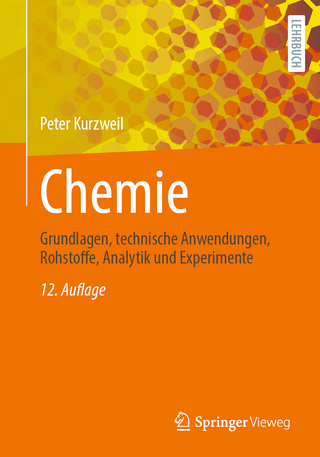
Ballistics
CRC Press (Verlag)
978-1-032-90945-5 (ISBN)
- Noch nicht erschienen (ca. Juni 2025)
- Versandkostenfrei innerhalb Deutschlands
- Auch auf Rechnung
- Verfügbarkeit in der Filiale vor Ort prüfen
- Artikel merken
Explaining the physics of a gun launch, the book describes the behavior of the propelling charge that moves the projectile through the gun tube and the necessary methods to calculate how the projectile will fly. The new edition features a new chapter on closed vessel experimentation and analysis, which discusses closed bomb testing to incorporate new propellants into interior ballistics designs. It covers the mathematical fundamentals that are key in developing a safe and reliable gun system.
With its thorough coverage of interior, exterior, and terminal ballistics, this new edition continues to be the standard resource for ballistics experts and researchers studying the technology of guns and ammunition and designing state-of-the-art propellants.
Instructors will be able to utilize a Solutions Manual and Figure Slides for their course.
.
Donald E. Carlucci has been an engineer at the US Army Armament, Research, Development and Engineering Center, Picatinny Arsenal, Morris County, New Jersey, since May 1989. He is currently the US Army senior scientist for computational structural modeling based at Picatinny. He holds a Doctor of Philosophy degree in mechanical engineering (2002) and a Master of Engineering (mechanical) (1995) degree from the Stevens Institute of Technology, Hoboken, New Jersey. In 1987, he received his Bachelor of Science degree in mechanical engineering from the New Jersey Institute of Technology, Newark, New Jersey. Dr. Carlucci is an adjunct professor of mechanical engineering at the Stevens Institute of Technology, founding and senior member of the International Ballistics Society, and chancellor of the US Army’s Armament Graduate School. Sidney S. Jacobson was a researcher, designer, and developer of ammunition and weapons at the US Army’s Picatinny Arsenal in Morris County, New Jersey, for 35 years. He rose from junior engineer through eight professional levels in research and development laboratories to become associate director for research and development at the arsenal. His specialty for most of his career was in the development of large-caliber tank munitions and cannons. Many of these weapons, such as the long rod, kinetic energy penetrators (armor-piercing fin-stabilized discarding sabot rounds), and shaped charge, cannon-fired munitions (high-explosive antitank rounds), have become standard equipment in the US Army. For these efforts and successes, he earned several awards from the army, including, in 1983, the Department of the Army Meritorious Civilian Service Medal. In 1972, he was awarded an Arsenal Educational Fellowship to study continuum mechanics at Princeton University, where he received his second master of science degree (1974). He earned a master of science degree in applied mechanics from the Stevens Institute of Technology (1958) and a bachelor of arts degree in mathematics from Brooklyn College (1951). He retired in 1986 but maintains his interest in the field through teaching, consulting, and lecturing. He holds two patents and was a licensed professional engineer in New Jersey.
1. Introductory Concepts. 2. Physical Foundation of Interior Ballistics. 3. Analytic and Computational Ballistics. 4. Ammunition Design Practice. 5. Weapon Design Practice. 6. Recoil Arresting and Recoilless Guns. 7. Closed Bomb Experimentation and Analysis. 8. Introductory Concepts. 9. Dynamics Review. 10. Trajectories. 11. Linearized Aeroballistics. 12. Mass Asymmetries. 13. Lateral Throwoff. 14. Swerve Motion. 15. Nonlinear Aeroballistics. 16. Introductory Concepts. 17. Penetration Theories. 18. Penetration of Homogeneous, Ductile Chromium–Nickel Steel Naval Armor by Three Representative Designs of Nondeforming Hardened Steel Armor-Piercing Projectiles with Bare Noses. 19. Shock Physics. 20. Introduction to Explosive Effects. 21. Shaped Charges. 22. Wound Ballistics. Appendix A. Glossary. Appendix B. Tabulated Properties of Materials.
| Erscheint lt. Verlag | 15.6.2025 |
|---|---|
| Zusatzinfo | 53 Tables, black and white; 10 Line drawings, color; 268 Line drawings, black and white; 9 Halftones, color; 8 Halftones, black and white; 19 Illustrations, color; 276 Illustrations, black and white |
| Verlagsort | London |
| Sprache | englisch |
| Maße | 178 x 254 mm |
| Themenwelt | Naturwissenschaften ► Chemie ► Technische Chemie |
| Naturwissenschaften ► Physik / Astronomie ► Mechanik | |
| Technik ► Umwelttechnik / Biotechnologie | |
| ISBN-10 | 1-032-90945-5 / 1032909455 |
| ISBN-13 | 978-1-032-90945-5 / 9781032909455 |
| Zustand | Neuware |
| Informationen gemäß Produktsicherheitsverordnung (GPSR) | |
| Haben Sie eine Frage zum Produkt? |
aus dem Bereich


